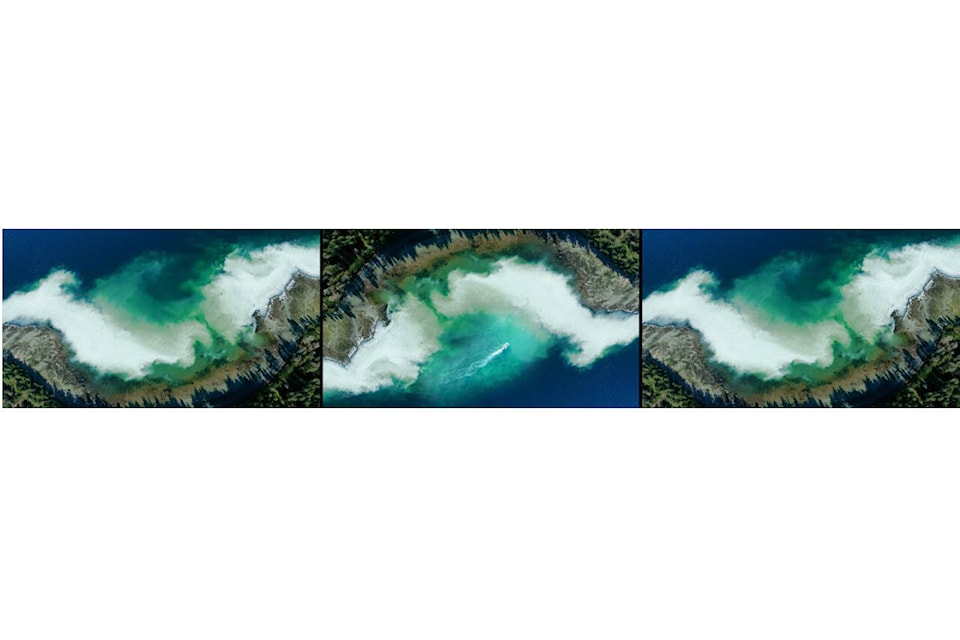Dear editor,
Anyone who has not yet seen Nettie Wild’s and Scott Smith’s show, Go Fish, at the Comox Valley Art Gallery in Courtenay, really ought to try and catch it before its final showing on May 27.
The triptytch of footage is only 15 minutes long, but its impact might keep you awake all night. Even the jaded among you may be brought to tears, as I was, with their artful portrayal of the spectacular natural beauty that surrounds us, that beauty we sometimes don’t try hard enough to protect. The show captures the annual herring spawn in and around Lambert Channel from land, sea, sky, and underwater. Predators that arrive to devour the herring include industrial fishing boats with vast nets reeling in and vacuuming up millions of herring. You will not be bored.
Viewers might wonder as I did if this extraordinary show is art for art’s sake. Or is there a message? It certainly arouses curiosity about herring, and a little fact sheet on herring to read after viewing the show would help to educate the public about a very crucial issue.
Without any accompanying literature, however, the show is in danger of giving the impression that there is an abundance of herring in local waters, whereas herring on the B.C. coast have been mismanaged and overfished for over a century and are endangered. The herring stock that spawns in and around Lambert Channel is the last commercially viable herring fishery on the B.C. coast, and it is barely hanging on to that status. This is tragic when you consider Indigenous elders told stories of wading thigh-high in herring at spawning time. In Indigenous communities up and down the Strait, herring and their roe were a mainstay food source, and in parts of the northern Strait, more important than salmon. No more. They are also a key forage species in a food chain that feeds 40 species of fish, birds and mammals, including salmon and whales.
The viewers of Go Fish might wonder where all these herring being scooped up by fishing vessels are going. Most are going to feed open-net farm fish whose lice and viruses are a threat to wild salmon. Some will become pet food, and their roe will be sold to Japan where they no longer fetch the high prices they did back in the ’70s. Nobody’s getting rich on herring anymore, not even billionaire Jimmy Pattison who owns much of the herring fleet. Herring are on the verge of complete collapse as will be the many other species in the marine food chain that rely on herring for their survival. Let’s pressure Jimmy and our Minister of Fisheries, Joyce Murray, to close down the herring fishery to non-Indigenous fishers for as long as it takes the populations to replenish themselves and the aquatic food chain they support.
Mary Jane Stewart
